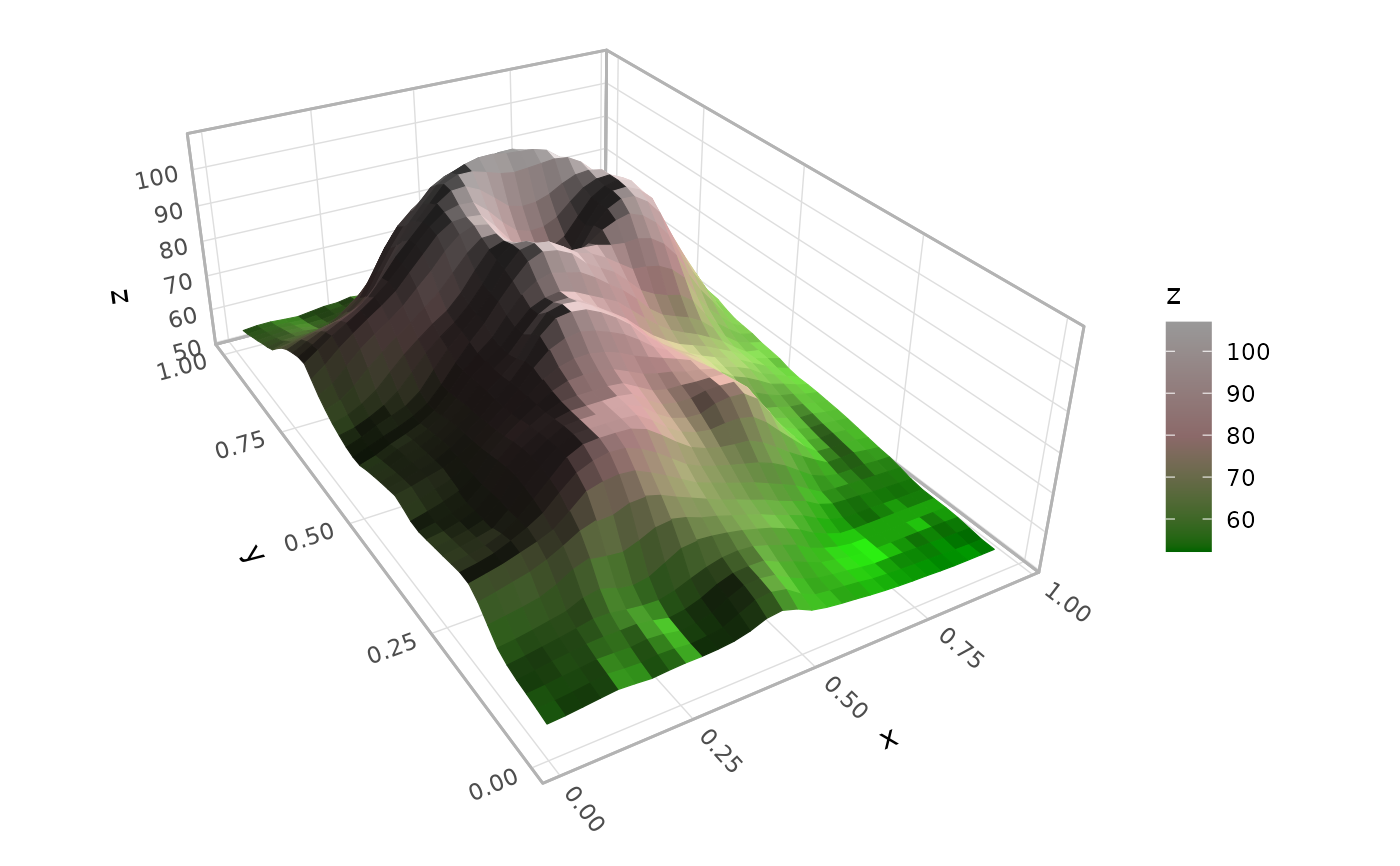Creates 3D surfaces from regularly gridded data (like elevation maps). Assumes data is on a regular x,y grid and creates quadrilateral faces.
Usage
stat_surface_3d(
mapping = NULL,
data = NULL,
geom = GeomPolygon3D,
position = "identity",
light = lighting(),
na.rm = FALSE,
show.legend = NA,
inherit.aes = TRUE,
...
)Arguments
- mapping
Set of aesthetic mappings created by
aes().- data
The data to be displayed in this layer.
- geom
The geometric object to use display the data. Defaults to GeomPolygon3D for proper 3D depth sorting.
- position
Position adjustment, defaults to "identity".
- light
A lighting specification object created by
lighting()- na.rm
If
FALSE, missing values are removed with a warning.- show.legend
Logical indicating whether this layer should be included in legends.
- inherit.aes
If
FALSE, overrides the default aesthetics.- ...
Other arguments passed on to
layer().
Aesthetics
stat_surface_3d() requires the following aesthetics:
x: X coordinate
y: Y coordinate
z: Z coordinate (elevation/height)
Computed variables
light: Computed lighting value (numeric for most methods, hex color fornormal_rgb)normal_x,normal_y,normal_z: Surface normal componentsslope: Gradient magnitude from original surface calculationsaspect: Direction of steepest slope from original surface calculationsdzdx,dzdy: Partial derivatives from original surface calculations
Examples
# Generate and visualize a basic surface
d <- dplyr::mutate(tidyr::expand_grid(x = -20:20, y = -20:20),
z = sqrt(x^2 + y^2) / 1.5,
z = cos(z) - z)
p <- ggplot(d, aes(x, y, z)) + coord_3d()
# basic surface
p + stat_surface_3d(fill = "dodgerblue", color = "darkblue", linewidth = .2)
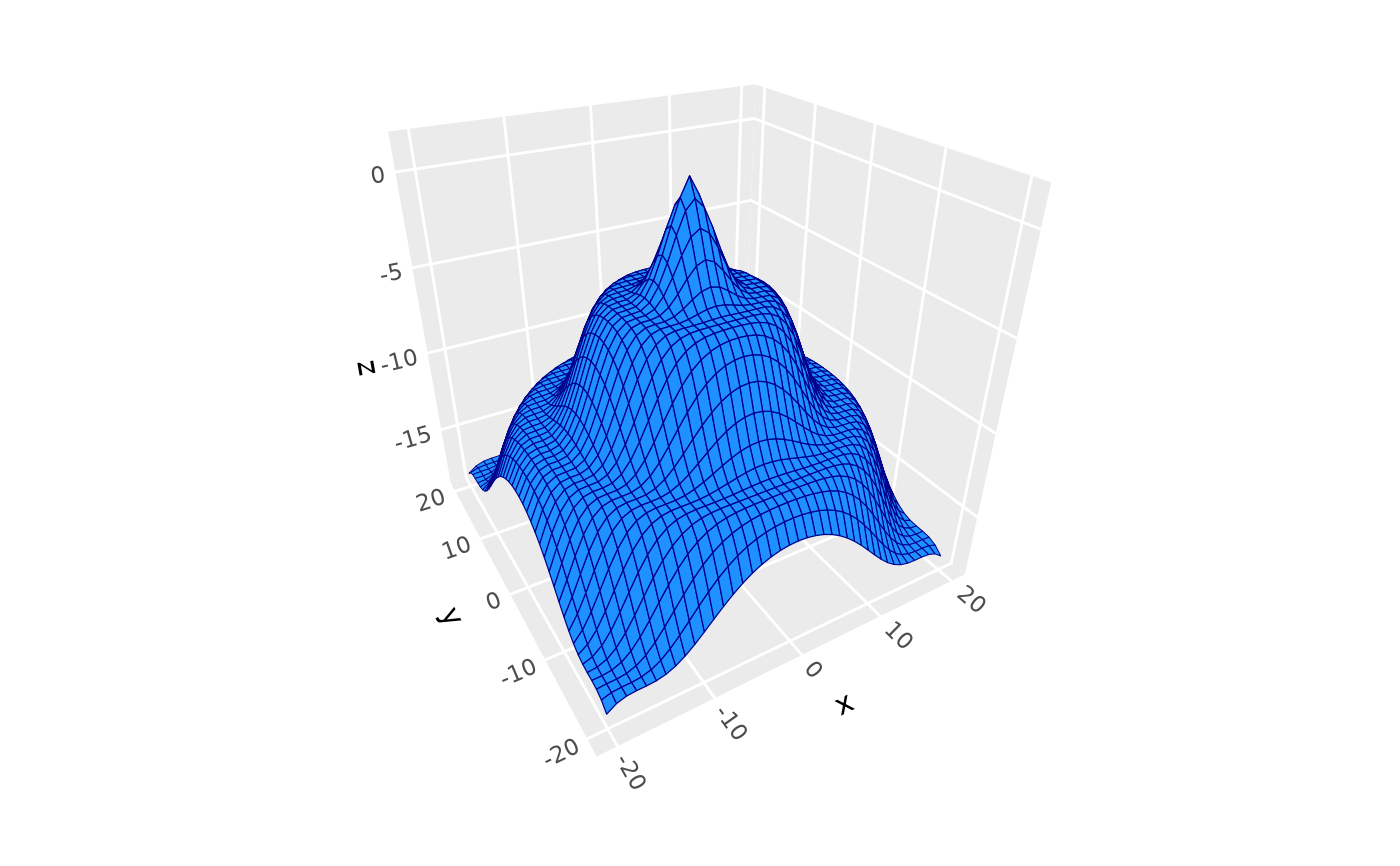 # with 3d lighting
p + stat_surface_3d(fill = "darkgreen", color = "darkgreen", linewidth = .2,
light = lighting(blend = "both"))
# with 3d lighting
p + stat_surface_3d(fill = "darkgreen", color = "darkgreen", linewidth = .2,
light = lighting(blend = "both"))
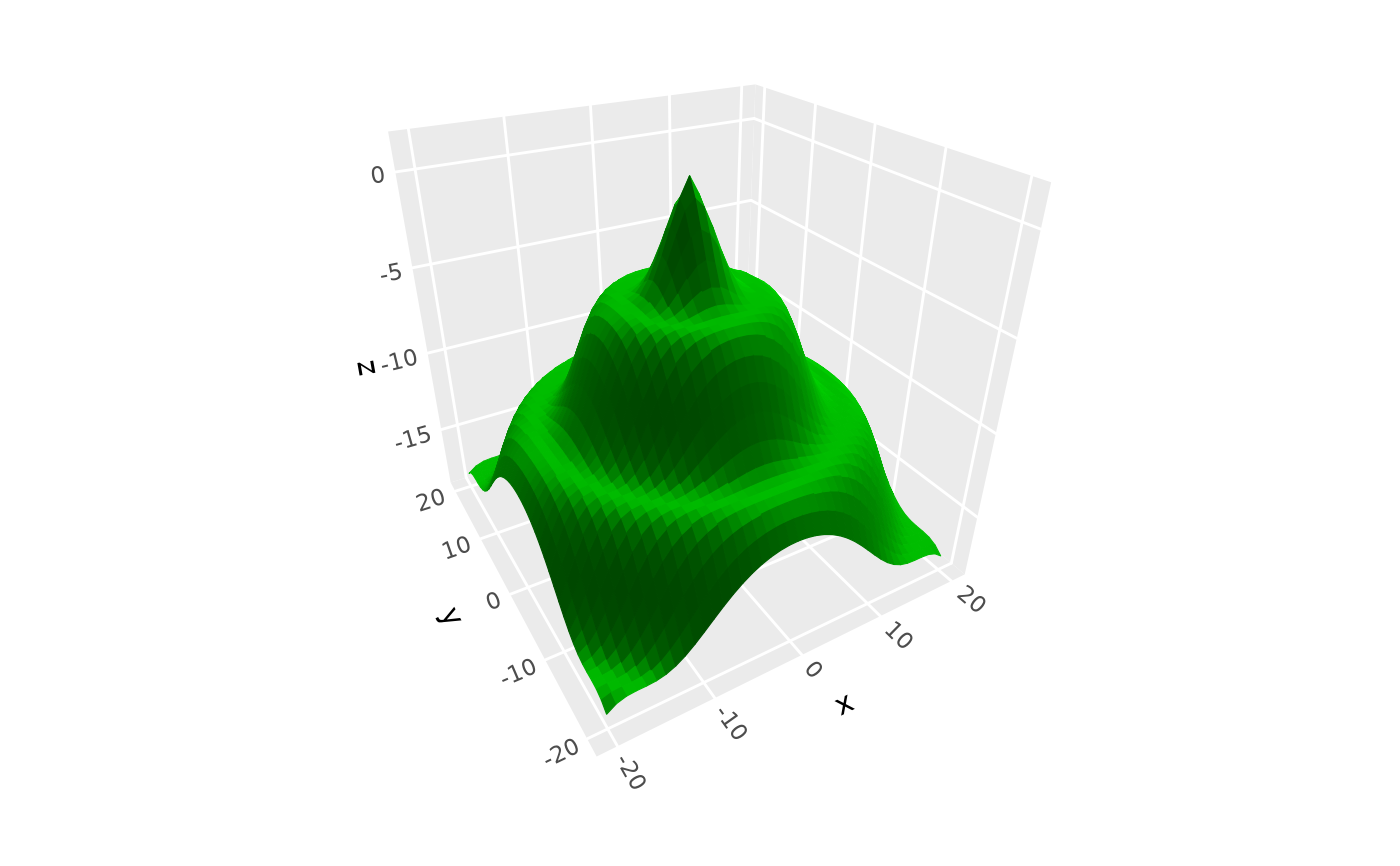 # mesh wireframe, without fill, with aes line color
p + stat_surface_3d(aes(color = z), fill = NA) +
scale_color_viridis_c()
# mesh wireframe, without fill, with aes line color
p + stat_surface_3d(aes(color = z), fill = NA) +
scale_color_viridis_c()
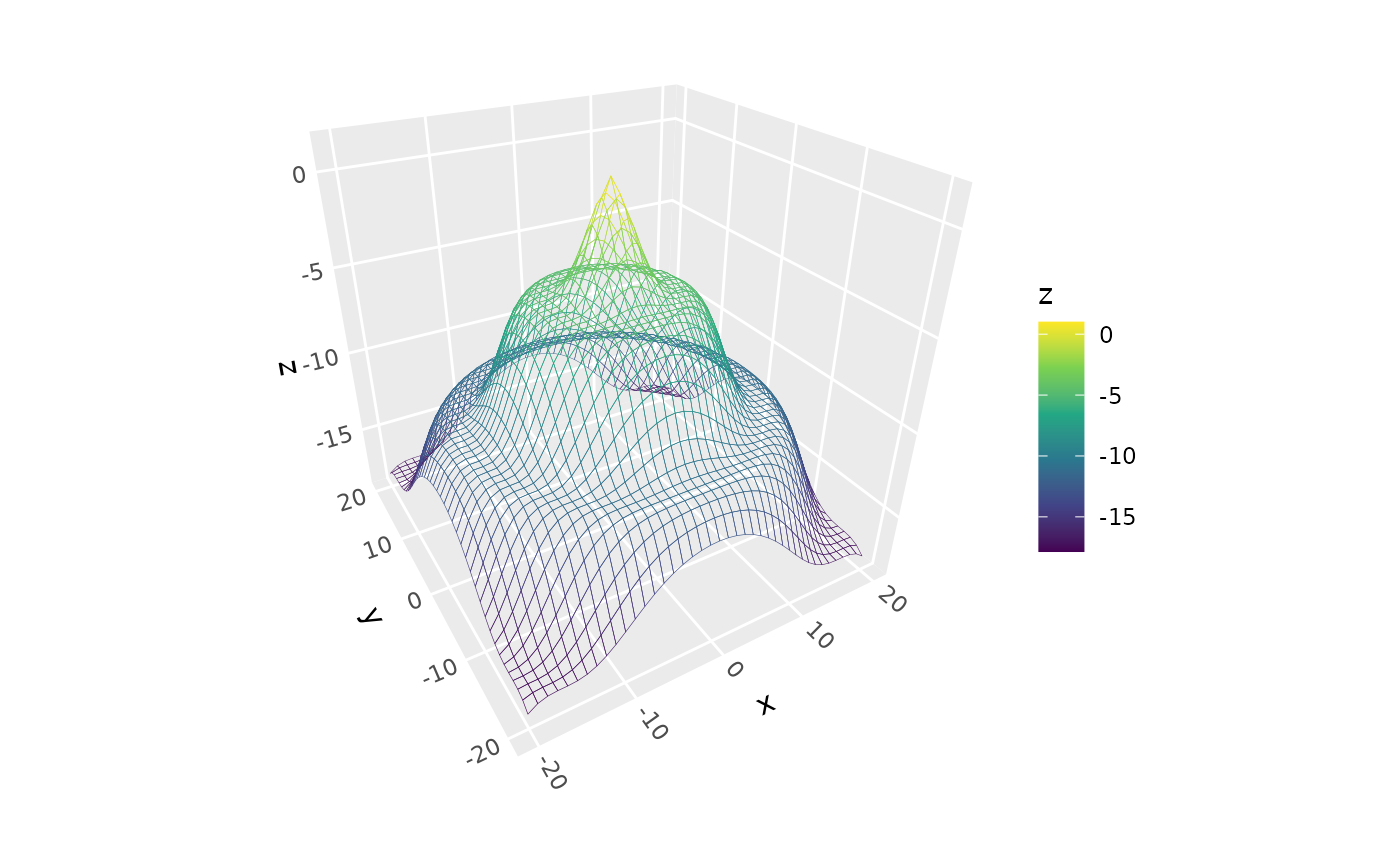 # use `group` to plot data for multiple surfaces
# (depth rendering works fine unless the surfaces intersect)
d <- expand.grid(x = -5:5, y = -5:5)
d$z <- d$x^2 - d$y^2
d$g <- "a"
d2 <- d
d2$z <- d$z + 10
d2$g <- "b"
ggplot(rbind(d, d2),
aes(x, y, z, group = g, fill = g)) +
coord_3d() +
stat_surface_3d(color = "black", alpha = .5)
# use `group` to plot data for multiple surfaces
# (depth rendering works fine unless the surfaces intersect)
d <- expand.grid(x = -5:5, y = -5:5)
d$z <- d$x^2 - d$y^2
d$g <- "a"
d2 <- d
d2$z <- d$z + 10
d2$g <- "b"
ggplot(rbind(d, d2),
aes(x, y, z, group = g, fill = g)) +
coord_3d() +
stat_surface_3d(color = "black", alpha = .5)
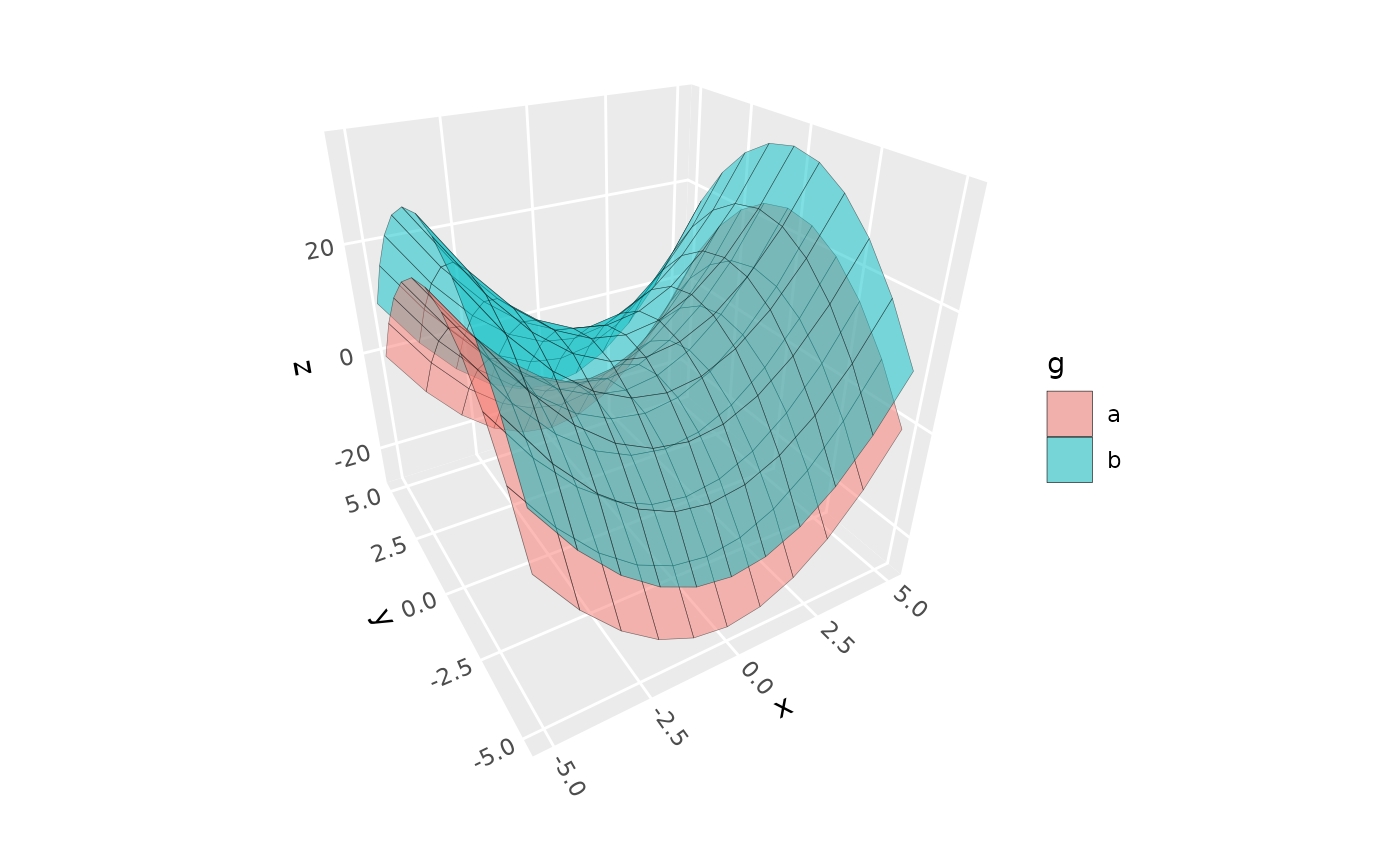 ggplot(mountain, aes(x, y, z, fill = z, color = z)) +
stat_surface_3d(light = lighting(method = "diffuse", direction = c(1, 0, .5),
blend = "both", blend_mode = "hsv", blend_strength = .9),
linewidth = .2) +
coord_3d(ratio = c(1, 1.5, .5)) +
theme_light() +
scale_fill_gradientn(colors = c("darkgreen", "rosybrown4", "gray60")) +
scale_color_gradientn(colors = c("darkgreen", "rosybrown4", "gray60"))
ggplot(mountain, aes(x, y, z, fill = z, color = z)) +
stat_surface_3d(light = lighting(method = "diffuse", direction = c(1, 0, .5),
blend = "both", blend_mode = "hsv", blend_strength = .9),
linewidth = .2) +
coord_3d(ratio = c(1, 1.5, .5)) +
theme_light() +
scale_fill_gradientn(colors = c("darkgreen", "rosybrown4", "gray60")) +
scale_color_gradientn(colors = c("darkgreen", "rosybrown4", "gray60"))
